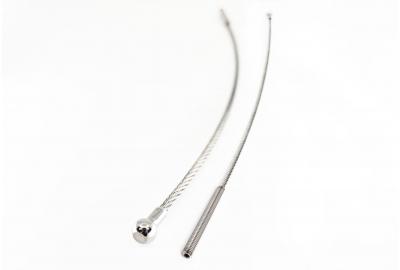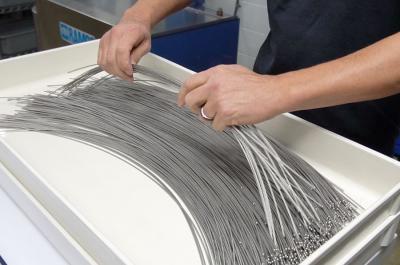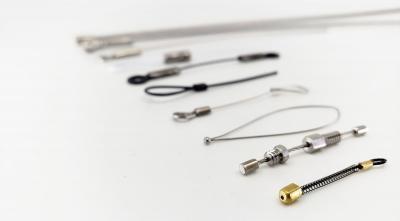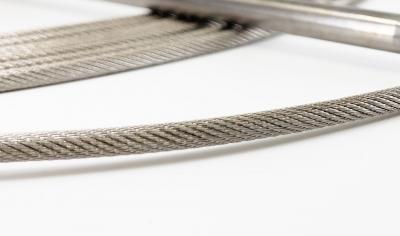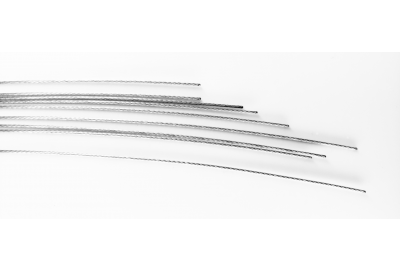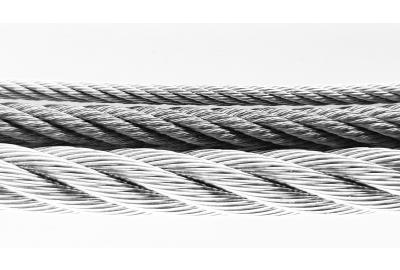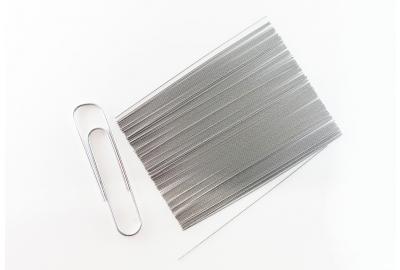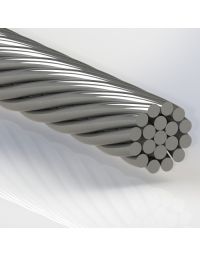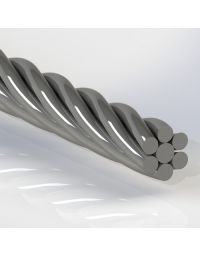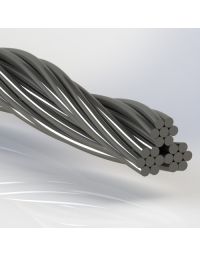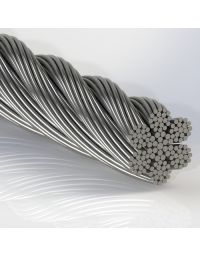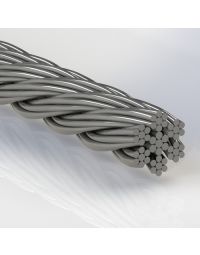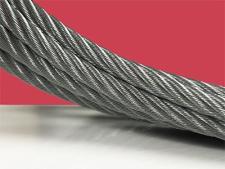Stainless steel is often the preferred material used to produce wire rope because it's cost-effective, strong, versatile and corrosion-resistant in many applications. Stainless steel's usability is quite diverse, from surgical instrumentation to flight hardware, to Space Shuttle components, back to intricate medical devices. In fact, many stainless alloys offer excellent biocompatibility in medical applications.
However, what types of stainless steel wire rope are best for your application?
What Makes Steel Stainless?
All steel is an iron-based alloy that contains at least 10.5 percent chromium. The higher the chromium levels within the stainless steel, the more corrosion resistance you are going to have. Stainless steel is broken up into five main categories. The one most commonly used to manufacture wire rope is austenitic, which is the most corrosion-resistant of all stainless steel. Stainless steel wire used to produce mechanical cable is generally broken into two alloys: 304 and 316.
304 vs. 316
The vast majority of wire rope specifications are designated with 316 or 304, and sometimes 302 grade. The basic difference is in the elements that comprise the alloy itself. For example, 304 has approximately 10 percent more tensile strength than equivalent stainless steel wire rope sizes and constructions using 316. While the differences are slight between stainless steel specifications, they do impact their effectiveness in various applications. For instance, the additional molybdenum content in316 stainless steel wire rope helps it to be more corrosion resistant than 304.
Domestically (in the USA), 304 stainless steel is the standard cable product offered, while in other parts of the world, 316 is the prevailing alloy of choice. But this is not to suggest that both are not readily available on any continent.
Strength is needed in an operation because it determines how many cycles the wire rope can last for without breaking down. 304 wire with a 1/32" diameter has a breaking strength of 115 lbs. At 1/2" diameter, its breaking strength increases to 30,000 lbs. Stainless steel 316 ranges from 1,780 lbs with a 1/8" diameter and up to 27,000 lbs with a 1/2" diameter.
Among the more common uses for 304 stainless steel mechanical cable is in the medical devices industry because of its corrosion resistance, strength, formability, manufacturing precision and reliability. In addition, it's recyclable, heat-resistant, antibacterial and non-magnetic, which makes it ideal for implants within the human body.
316 and 316L, a low carbon version of 316 stainless steel, have all the perks of 304. Additionally, the increased percentage of molybdenum makes 316 more resistant to chemical attack, including sulfuric acid, bromides, iodides and fatty acids. What’s more, 316 is easy to sterilize, weld and finish across a wide swath of for numerous applications.
As noted, the benefits and applications for 316 and 304 overlap quite a bit. Engineers are going to choose the stainless steel cable based upon their application requirements, which include tensile strength, environment, corrosion-resistance, form, function and a wealth of other considerations.
Stainless Steel Saves Lives
Stainless steel is critical to the manufacturing of life-saving medical devices, including heart valves, orthopedic implants, sensor probes, needles and much more. However, it's also vital to keeping many things around us operating safely. For example, in the case of surgical instruments, perhaps the cable is not going inside a person, but rather actuating motion in the instrument the surgeon uses to repair a hip or shoulder joint.
Similarly, in manufacturing settings, stainless steel keeps workers safe by ensuring that equipment is resistant to fatigue and corrosion.
Key Takeaways
-
Stainless steel is cost-effective, strong, corrosion-resistant and versatile.
-
304 and 316 mainly differ in their level of corrosion resistance, with 316 containing molybdenum, making it more resistant.
-
Working with the right wire rope for your application ensures the safety of those using the finished products.
Carl Stahl Sava Industries provides in-house design, production and testing to manufacture cable assemblies for diverse markets around the world. Let our team help you determine the best stainless steel for your application. Contact us to get started.

